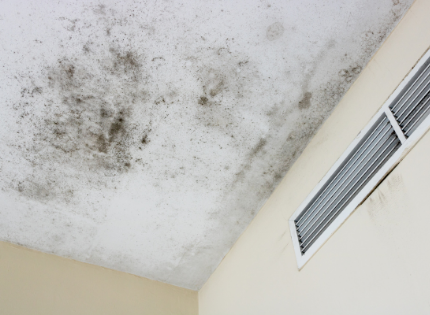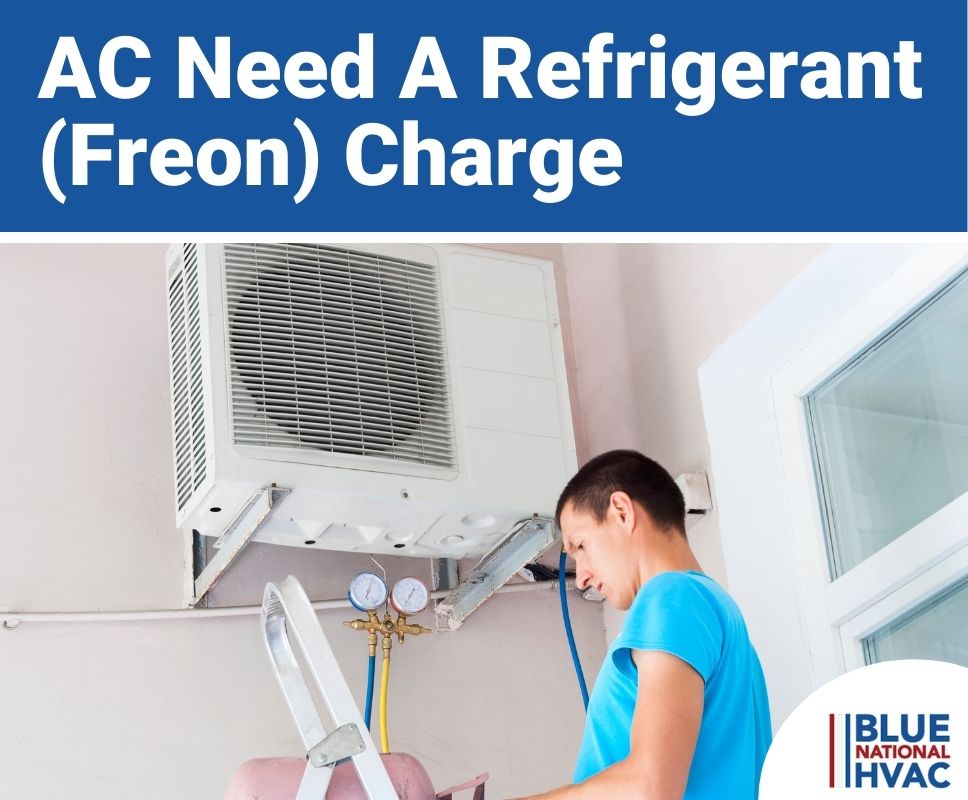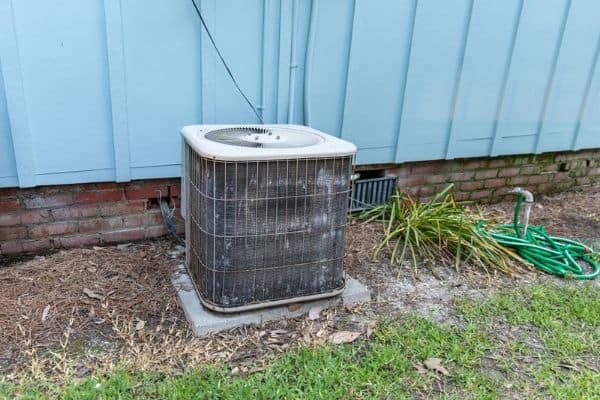Contents (Click To Jump)
What Are The Environmental Signs Of Poor Indoor Air Quality?
Your home is a sanctuary; it is the place that shelters you from the cold in the winter and the sweltering heat in the summer. However, if your home does not have great indoor air quality (IAQ), it might make you ill.
Poor indoor air quality can cause respiratory distress, skin issues and even affect your sleep. If you suspect your home has poor indoor air quality, there are some signs to look for with your air conditioning unit, furnace, or heat pump, which we explain below.
Bad Odors
One of the more apparent signs of bad indoor air quality is terrible smells. Unpleasant odors can be generated by many things, including chemicals, mold/mildew, excess dust/dirt, refrigerant leaks, pests (alive and deceased), pet hair, and other particle pollution. You might become accustomed to the smells in your home, but letting these bad smells persist could be detrimental to your health and your home.
Mold and Mildew
Mold and mildew are a major cause of foul odors. However, they do not only produce nasty smells; they are irritants as well. They can become airborne and circulated by your HVAC system, and can cause issues on your skin and respiratory tract. Mold and mildew are usually caused by humid indoor conditions or water leakage in the home.

Prolonged exposure to mold and mildew can lead to head colds and bronchitis in the short-term and more serious issues after long-term exposure. Decreased lung function, lung cancer, COPD (chronic obstructive pulmonary disease), heart failure, and emphysema may result from excess mold exposure.
Hot and Cold Spots
Hot spots and cold spots in your home mean that those areas are not receiving adequate airflow. This can be caused by issues with your furnace or air conditioner. For example, the air filter or coils could have clogs of dust and dirt, it may have a refrigerant leak, or the ductwork itself may have debris blockages.
Another reason for hot spots or cold spots could be from the HVAC being undersized or oversized. If the HVAC unit is undersized, it won’t cool or heat your home successfully. On the other hand, if it is oversized, the HVAC system will short-cycle, which will cause the HVAC system to turn on and off frequently.
In either case, these issues can lead to poor indoor air quality.
High or Low Humidity
Moist and humid conditions create the perfect environment for mold and mildew growth. Depending on your climate zone, the outdoor humidity may be very high in the summer months. Reducing the amount of moisture in your home is key to reducing the likelihood of mold and mildew growth, which can cause respiratory issues and asthma flare-ups.
To reduce the humidity in your home, use a dehumidifier. On the other hand, if you live in a very dry climate, use a whole-house humidifier to increase the humidity in your home.
Inadequate Airflow
Too little airflow from your HVAC system into your home can lead to poor indoor air quality. If there is not enough fresh air circulating, the air will stagnate, and any dust, pollen, and other irritants will linger in the air.
If you notice that some supply vents in your home are not getting airflow, contact our team of HVAC experts for assistance.
Lots of Dust
If there is a lot of dust circulating in your home, that is a clear indicator of poor indoor air quality. An accumulation of dust in the air could be caused by a dirty air filter, clogged indoor coils, or dirty ductwork altogether.
To mitigate poor indoor air quality due to excess dust, keep the interior of your home clean by vacuuming and dusting on a routine basis. Additionally, clean or replace the HVAC air filter when it becomes dirty (it is best to check it monthly). If the dust is still too much, you can upgrade your air filter to a HEPA filter.
What Are The Physical Health Symptoms Of Poor Indoor Air Quality?
Poor indoor air quality can have notable effects on the occupants of the home. Symptoms of poor indoor air quality range from the slight annoyance of a runny or stuffy nose to a full-on sinus infection or asthma attack.
It is imperative to pay attention to the air quality in your home if it is occupied by sensitive groups such as pregnant women, older adults, people with lung disease and other health problems, and children.
Here are all the common symptoms homeowners with poor indoor air quality experience.
Poor Sleep Quality
Along with the temperature and humidity, air quality is an essential factor in sleep quality. High levels of pollutants and dust circulating in your air could keep you awake. If you are suffering from a lack of sleep, your immune system could be further impaired. Lack of rest could contribute to other ill effects of bad indoor air quality, like head colds, headaches, and respiratory symptoms.
Fatigue
Air contaminants, including chemicals, pesticides, radon, gases, volatile organic compounds, and carbon monoxide, can all affect your mental acuity. They can cause brain fog, dizziness and make you feel like you have little to no energy.
If you experience a sudden onset of these symptoms, leave your home immediately and call the fire department. They will check for gas leaks and high levels of carbon monoxide. Additionally, you should have carbon monoxide and gas leak detectors installed on each floor of your home for safety purposes.
Frequent Illnesses
If the air in your home is very dry (low humidity), viruses, bacteria, and other pathogens can move more freely in the air. To make matters worse, dry conditions also irritate mucous membranes, making you more susceptible to infection.
If anyone in your household often presents with cold or flu symptoms, you may want to check your indoor air quality.
Irritated Mucous Membranes
Dry air with low humidity tends to dry out your body too. In particular, the first areas affected are the parts of your body that require the most moisture– your mucous membranes. Mucous membranes include your nose, mouth, eyes, and throat.
Throat irritation, cracked lips, and a dry nose with frequent nosebleeds are key indicators that your home has poor indoor air quality and lacks proper humidity levels.
Headaches
Headaches is yet another symptom of poor indoor air quality. Headaches mainly stem from contaminants such as vapors, particulates, chemicals, etc., but can be due to dry conditions as well.
Sinus Inflammation
Contaminated air negatively affects mucous membranes, which include the sinuses. Poor indoor air quality can lead to sinus inflammation, infections, a runny nose, and even sinus headaches.
Cough, Congestion, and Other Respiratory Issues
Cold and flu symptoms, coughing, and shortness of breath can indicate bad indoor air quality. If the air is not conditioned and filtered properly, it can lead to conditions that spread viruses, bacteria, and pathogens around the home. Additionally, poor air quality means the environment may weaken immune systems, and harbors a perfect environment for the spread of germs and viruses.
Nausea
In some cases, airborne contaminants and poor indoor air quality can make the home occupants feel nauseated. In these cases, it is typically mold or other pollutants that negatively affect the health of the home’s occupants.
If the nausea is prolonged, seek medical attention and have your home inspected by an HVAC technician for a potential cause (after other possible causes besides poor air quality have been ruled out).
Dry, Irritated Skin
Along with respiratory issues and nausea, poor indoor air quality can cause skin problems too. Skin problems can range from dryness due to low humidity to full-on rashes that require a doctor’s attention.
What Are The Causes Of Poor Indoor Air Quality?
The leading causes of poor indoor air quality include bad outdoor air quality, dirty filters, or an HVAC that is acting up or improperly sized. Indoor air can contain pollutants and contaminants such as pet hair or dander, dust, gas leaks, asbestos, carbon monoxide, mold, mildew, and other chemicals and volatile organic compounds.
Air pollution in your home can be just as bad as the outdoors, especially if you live in an area with high levels of air pollution. However, with proper maintenance and air filtering, you can immediately improve your home’s indoor air quality.
Bad HVAC System
HVAC systems are designed to control the temperature and humidity of your home while providing conditioned air to every room. However, when something goes wrong, it could impact the quality of the indoor air.
For example, the HVAC system could have:
- A failing blower– this could lead to inadequate airflow
- Refrigerant leaks– refrigerant can be harmful if inhaled
- A failing compressor– could lead to dry conditions and insufficient cooling and heating
- Gas leak– leaking natural gas from a gas furnace or blower negatively impacts indoor air quality and is dangerous. If you smell sulfur (rotten eggs), leave the home and call emergency services
- Carbon monoxide (CO) leak– if the flue of the furnace develops a leak, exhaust gas containing CO will enter the home
Indoor Air Contaminants
Aerosols, paint, glue, smoke, cleaners, and other airborne toxins are common household causes of bad air quality. Outdoor pollution levels can contribute air pollutants to your home. For example, if a wildfire burns near your home, particulate matter will also increase indoor air pollution. Use proper venting and avoid these contaminants if possible.
Keep an eye on the air quality index (AQI). If it is high, keep your windows closed to maintain the air quality inside your home.
Insufficient Air Changes
The amount of air circulated into your home from the outdoors is essential. According to the ASHRAE standard 62.2 and the EPA (Environmental Protection Agency), homes should receive 0.35 air changes per hour but no less than 15 CFM per person to minimize adverse effects on health. If the airflow in your home is too low, consult one of our HVAC technicians for assistance.
Insufficient Filtering
To filter the air in your home sufficiently, you may have to use an HVAC filter with a better MERV rating. MERV stands for Minimum Efficiency Reporting Value and is rated on a scale of 1 through 16. The higher the rating, the smaller the particulates it captures, meaning filters with higher MERVs should help improve indoor air quality.
How Can You Improve The Quality Of Air In Your Home?
If you’re suffering symptoms from poor indoor air quality or you’ve recently noticed some tell-tale signs from your HVAC system, you might be wondering how you can improve your IAQ.
Clean Your Air Filter
The best and fastest way you can improve the indoor air quality of your home is by staying up to date with cleaning or replacing your HVAC filter. The air filter traps dust, particulates, pathogens, and other airborne particulates. The filter prevents them from being circulated throughout your home. However, when it becomes saturated with dirt and debris, it will no longer filter the air successfully.
Homeowners should check their air filters monthly and clean or replace them when dust is visible on the filter.
Clean Your Air Ducts
Most HVAC experts recommend having your ductwork cleaned once every five to seven years. However, if you have lots of pets, it might be better to do this more frequently. Pet hair and dander can get trapped in your ductwork, which decreases airflow and contaminates the air.
When an HVAC technician cleans the ductwork, they use a special vacuum to dislodge all the hair, dust, and other dirt.
Use Cooking Vents
Whether you’re cooking on electric or gas stoves, always use the cooking vent to prevent the smoke and grease from circulating through your HVAC system.
Clean Your Floors and Carpet
Keeping your home tidy will improve its air quality. Routine vacuuming and dusting will capture hair, dust, and dirt before your HVAC system recirculates it.
Maintain Proper Humidity
Maintaining a good humidity level in your home will improve the indoor air quality. The ideal level is between 40% to 50%. Anything above 50% can encourage the growth and spread of mold.
Some HVAC systems have built-in humidifiers, which can be toggled to increase or decrease the amount of moisture added to the air. However, if your humidity is too high, you might have to use a dehumidifier.
Use Air Purifiers
Air purifiers are devices that suck in air, filter it, and blow it back out. Sophisticated air purifiers have UV lights that kill bacteria and pathogens. They are standalone air cleaner devices that can be purchased as supplemental air quality improvement devices.
How Can An HVAC Contractor Help?
Our team of experienced HVAC technicians can identify the cause of your home’s poor indoor air quality and recommend steps to improve it. These improvements can range from repairs to your HVAC system, duct cleaning, or installing a whole-house air purifier and humidifier. If you have poor air quality, give the team at Blue National HVAC a call today for assistance.









